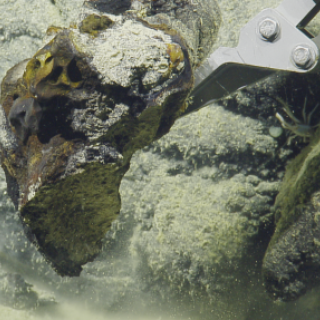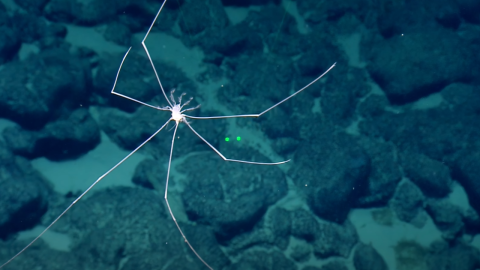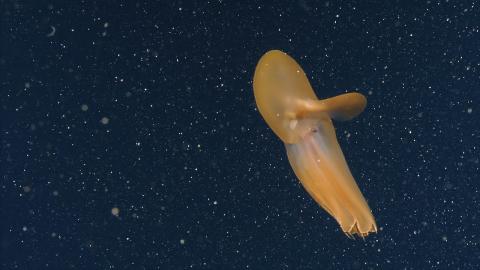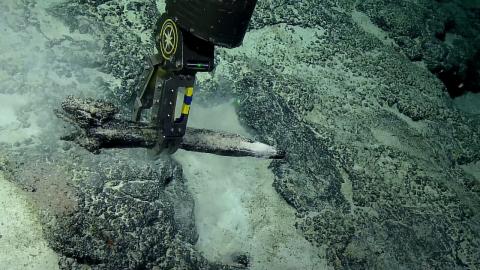Sampling Mineral-Rich Biomes with Scripps Institution of Oceanography
In addition to collecting video imagery and logging observational data in real-time, collecting geological, biological, and chemical samples is an integral part of the E/V Nautilus mission. Through exploring mineral-rich settings in the deep waters of southern California, researchers from Scripps Institution of Oceanography hope to learn what animals and microbes live on or avoid phosphorites and iron-manganese (Fe-Mn) crusts that form on the banks, seamounts, and ridges under low oxygen waters at depths of 400-1,500 meters (1,312-4,921 feet).
Although deep seabed mining is not currently an issue in southern California, phosphorites are increasingly being targeted for fertilizer, and the Fe-Mn crusts for rare earth and other elements elsewhere in the world. Ongoing studies by Scripps researchers of animal and microbial biodiversity associated with these resources should help inform society’s management and decision making in the deep ocean.
Working with this research team aboard E/V Nautilus and ashore, we employed a full suite of sampling techniques to explore the biotic diversity, biopharmaceutical potential, and the substrate mineral composition of the ecosystems. For geological and sediment sampling necessary for collecting many of the residents and minerals that compose the seafloor, our team will deploy a clear tube known as a push core. As its name suggests, the core is pushed down into the sediment and then carefully pulled back out after it is filled with sediment, allowing for the horizontal layers of sediment and infauna to be preserved for further analysis.
it comes to the collection of biological samples, our expert team of ROV pilots will determine which technique to use based on the size and fragility of the specimen. The most basic method is using the two-fingered jaws on ROV Hercules’ manipulator arm, and other samples may be collected using specialized grippers, as well as the scoop and slurp methods.

Benthic Communities and their Biopharmaceutical Potential
In this interdisciplinary expedition on the Exploration Vessel Nautilus, we intend to study the Southern California Borderland benthic communities to better grasp the biotic diversity, biopharmaceutical potential, and the substrate mineral composition of the ecosystems.



